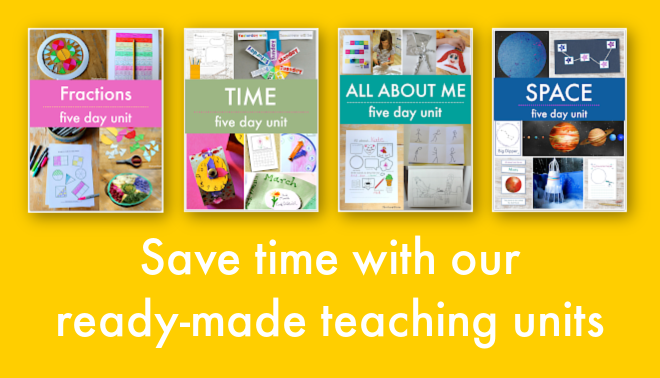Welcome to October’s NurtureStore Tween Book Club where we are reading and learning about Walk Two Moons by Sharon Creech.
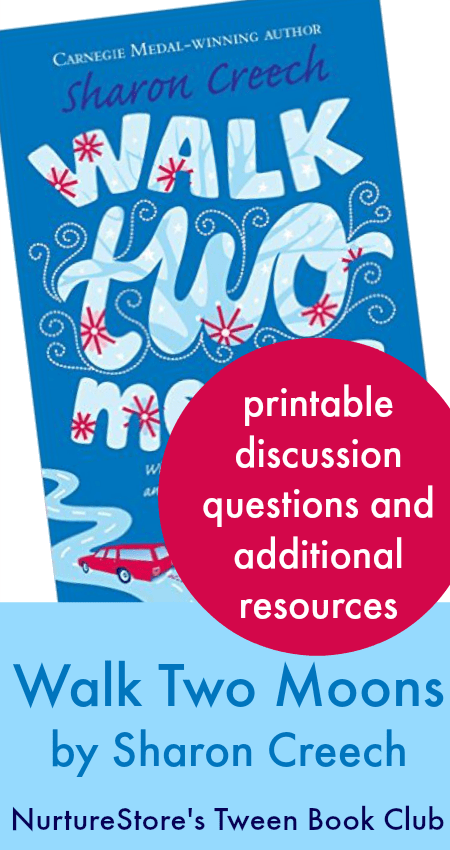
How to join the Walk Two Moons book club discussion
This page contains affiliate links from which we earn commission.
As an Amazon Associate I earn from qualifying purchases.
This month we are reading Walk Two Moons by Sharon Creech. The book weaves together three inter-linked stories of a road trip across America, a family mystery, and a journey through relationships to discover your true self.
See more of the book at Amazon.
I’m running a real-life tween book club with my daughters and some of their home-educating friends. We’re meeting in a local cafe to chat about the book and share our opinions. You can join in with us online, here in the comments and on Instagram using #nurturestorebookclub.
All the children joining in are asked to:
:: read the book
:: consider the discussion questions (which you will find below, including a printable version)
:: share their opinions on the book and the discussion questions, and listen to each others’
:: bring along something to the group that they have produced, inspired by the book, to share with the others, so we are all teaching and learning from each other. It could be some fan fiction, art, a map, a recipe, a costume, a zine, research about the book’s setting, a quiz, a film of them acting out a scene, anything goes! This encourages everyone to take the book further, and explore an aspect of it that interests them. If you’re joining in online please share your creation with us in the comments, or on Instagram using #nurturestorebookclub.
The main page for NurtureStore’s Tween Book Club, with the annual book list and guide to running a book club with children is here.
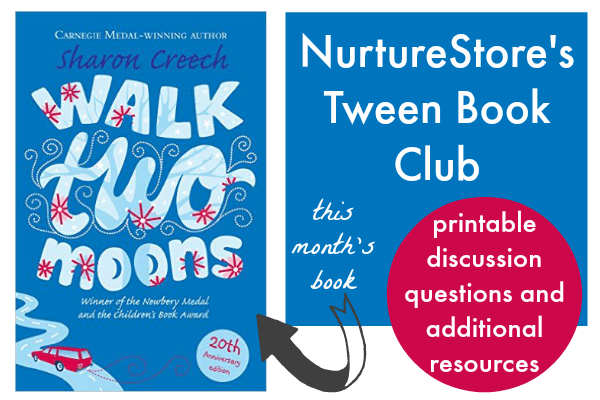
Walk Two Moons teaching guide
Here are some discussion questions you can use to talk about the themes raised in Walk Two Moons. If you are joining in with our online book club, use the comments below to share your answers. You can also find a printable version of these discussion questions here.
1. Let’s start at the end, because the book has such a powerful conclusion. Did you like the way the book ended? Did you work out how all the stories were going to work out? (What did you think had happened to Sal’s mother? Who did you think was leaving the notes on Phoebe’s porch? What did you think had happened to Phoebe’s mother?) Did anything surprise you?
2. How did you feel when you finished the book? What other emotions did you have as you were reading through the chapters? (Did any part of the book make you laugh? Make you annoyed? Make you puzzled? Make you sad?)
3. Why do you think Sharon Creech didn’t let us know what had happened to Sal’s mother until the very end of the book?
4. A main idea of the book is the road trip that Sal takes with her Gram and Gramps. Have a look at a map of the United States and see if you can track her journey through the states.
Have you ever been on a long road trip? Where did you go and why?
5. A good word to know when we’re talking about books is metaphor. A metaphor is a word or phrase that is used to make a comparison between two people, things, animals or places. A metaphor can be used to make a more visual description of the thing you’re talking about: The snow was a white blanket. Her eyes were fire. The thunder was a mighty lion’s roar.
In Walk Two Moons Sal’s actual road trip in the car with her grandparents could be a metaphor for a different kind of journey Sal is making. Sharon Creech said:
“The physical journey is always a metaphor for the interior journey. And perhaps because I lived so much of my life outside of my home country, I am in tune to this notion that, as you go, you are learning something not only about the world, but also about yourself in the process.”
What other kind of journey is Sal making in the book, with her feelings? Does anyone else in the book make an emotional journey?
6. Another good phrase to know to be able to discuss books is narrative thread. Sometimes this is called the plot thread, or the storyline. It is the story being told, and is made of the character(s) and what they do.
Sometimes there is one main narrative thread that leads you from the start of the story, through the middle action, to the conclusion at the end.
In Walk Two Moons, Sharon Creech very cleverly weaves several narrative threads together, all the way through the book. The narrative threads criss-cross within the chapters, going backwards in time, and overlapping. What would you say are the three main narrative threads in Walk Two Moons?
7. Did you like the way Sharon Creech weaved several narrative threads together? How did it make you feel when the storylines were criss-crossing?
Have you read any other book that uses this same technique?
8. The title of the book comes from the Native American Indian saying ‘Don’t judge a man until you’ve walked two moons in his moccasins.’
Pick a character from the book and try on their moccasins. How do you think Phoebe; Sal’s dad; Mrs. Cadaver; or Gram… felt at different times in the book?
Then pick someone you know in real-life and try on their moccasins. Think of the last person you had an argument with, or someone you disagree with, and try thinking how they think: not about what they did to you, but why, from their point of view, they might have done it.
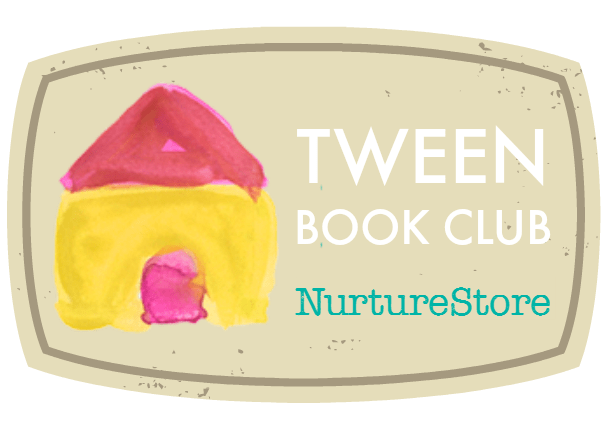
Extra Walk Two Moons resources
Here are some extra resources you can use to learn about Walk Two Moons.
:: Sharon Creech’s website is here.
:: You can learn about Sharon here – guess where she was born!
:: There are more Walk Two Moons discussion guides here, here and here.
:: This Pinterest board has lots of resources, lesson plans, and activities to study Walk Two Moons in more depth.
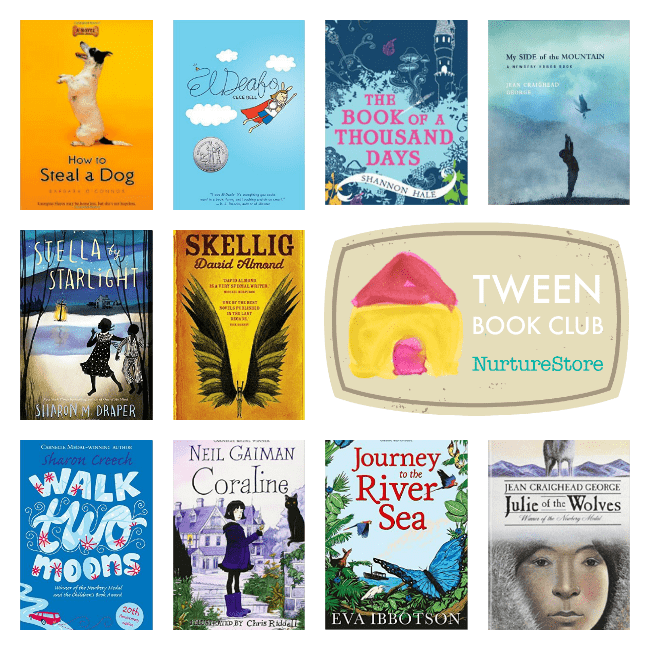
Join the NurtureStore Tween Book Club each month
You can see our tween book club reading list here, along with ideas for how to run a book club for tweens. Next month we’re reading Skellig by David Almond – join us!
Pop your email address in the box below and I’ll send you my Play Planner newsletter which includes updates on all the book club news, along with extra resources for creative kids learning.
By subscribing, you consent to our use of your personal data as per our Privacy Policy, which includes agreeing to receiving interest-based email from us.



